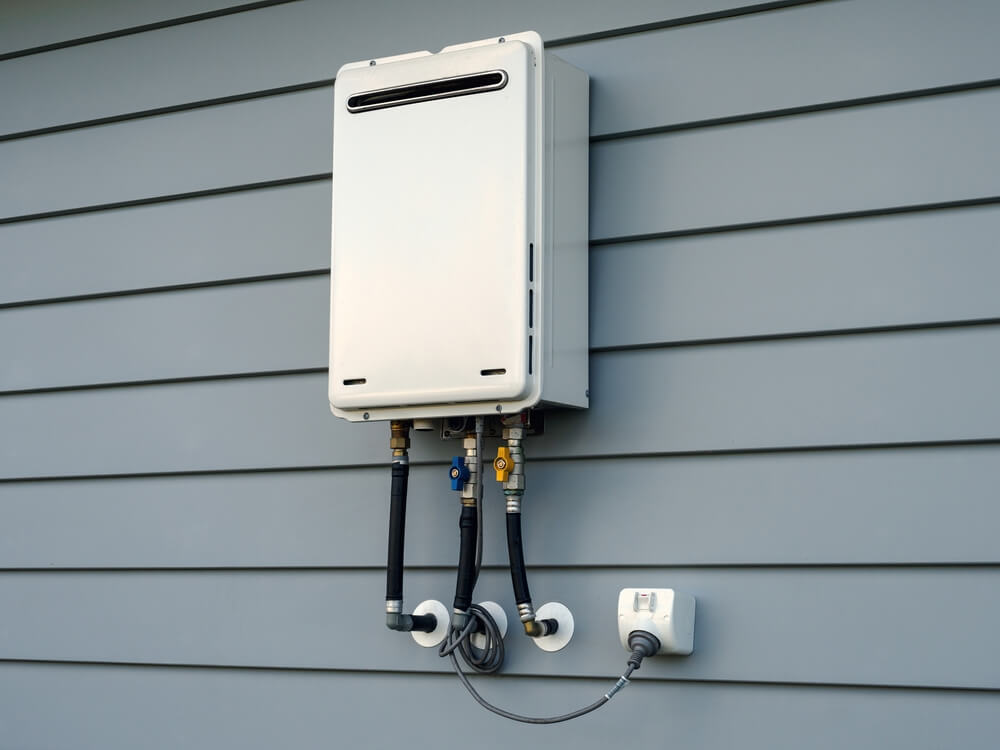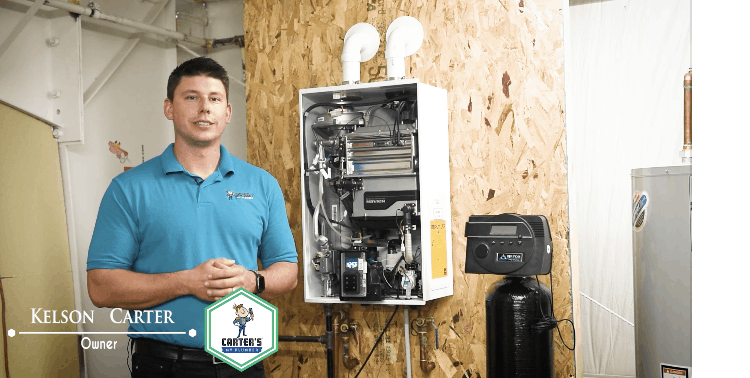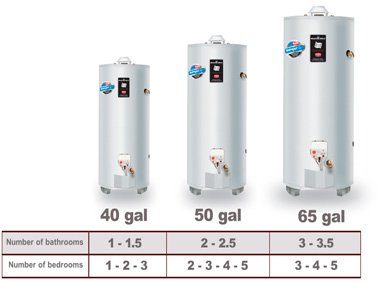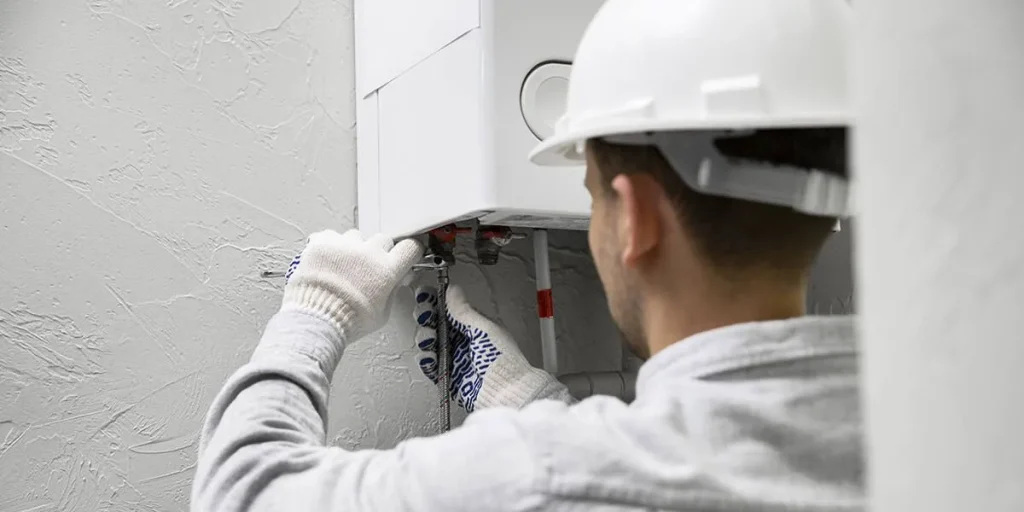Disclosure: This post contains affiliate links and I will be compensated if you make a purchase after clicking through my links. Learn More
Have you ever wondered why installing a tankless water heater seems to cost an arm and a leg? You’re not alone.
Many homeowners find themselves baffled by the high price tag attached to this modern convenience. But before you dismiss the idea, consider what you’re truly paying for. With promises of endless hot water and energy savings, tankless water heaters are becoming a popular choice.
Yet, the initial investment often causes pause. Imagine stepping into a steaming shower every morning without worrying about running out of hot water. Picture your energy bills shrinking month after month. These benefits are within reach, but understanding the cost is crucial. By diving into the reasons behind the expenses, you’ll uncover the true value of tankless water heater installation.
Stick around to find out why the price might just be worth it. With insights into the installation process and hidden costs, you’ll be equipped to make an informed decision. Don’t let the price deter you from potentially transforming your home and lifestyle. Let’s explore what makes tankless water heater installation so expensive—and why it could be a smart investment for you.
Factors Driving Costs
Professional installation, specialized equipment, and complex piping contribute to high costs of tankless water heater installation. Careful planning and skilled labor ensure safety and efficiency, impacting the final price.
When considering a tankless water heater, you might be surprised at the installation costs. Many factors contribute to these expenses, making it crucial to understand what you’re paying for. Let’s break down the elements driving these costs so you can make an informed decision.
Advanced Technology
Tankless water heaters are modern marvels, offering endless hot water on demand. This advanced technology requires sophisticated components and precise installation techniques. Think about the intricate design that allows water to heat instantly without a storage tank. This innovation comes with a price tag.
The complexity demands skilled professionals to ensure proper setup, making labor costs higher. Have you ever tried to do a tech upgrade yourself? It’s like that, but with plumbing and electricity. The precision required is vital for safety and efficiency, and that’s why the tech-savvy installation isn’t cheap.
High-quality Materials
The materials used in tankless water heaters are not your standard fare. They are designed to last and withstand constant use, which requires higher-quality components. These units often include stainless steel and copper, known for their durability and heat conductivity. Quality materials mean fewer breakdowns and a longer lifespan, saving you money in the long run.
Imagine buying a piece of clothing that never wears out. That’s what you’re getting with these materials—quality that justifies the initial expense. Would you prefer to pay less now and more later in repairs and replacements? High-quality materials are an investment in peace of mind.
Understanding these factors helps you appreciate the value behind the cost. While the initial price may seem steep, the long-term benefits of reliability and efficiency often outweigh the upfront expense. Is the investment worth the assurance of endless hot water and fewer maintenance worries?
Installation Complexity
Tankless water heater installation can be expensive due to its complex process. Specialized skills are required to handle plumbing and electrical work. Adjustments to existing systems add to the cost.
Installing a tankless water heater can seem like a simple upgrade, but the process is far more intricate than it appears. The complexity of the installation process is one of the main reasons these installations can be expensive. From professional expertise to modifications to existing systems, every step requires careful planning and execution. Let’s break down what makes this installation so challenging.
Professional Expertise
The installation of a tankless water heater is not a task for amateurs. It requires specialized knowledge and skills. You need to hire professionals who understand the intricacies involved. Not only do these experts have the technical know-how, but they also ensure your system is safe and efficient.
They follow strict guidelines to avoid future problems. Imagine trying to install one yourself without experience. You’d likely end up with a mess, or worse, a safety hazard. Professional expertise comes with a cost, but it guarantees a job well done.
Modifications To Existing Systems
Switching from a traditional to a tankless system often involves significant changes. Your current plumbing and electrical systems might need upgrades to accommodate the new heater. Pipes may need re-routing or resizing, and electrical systems might require enhancements to handle increased power demands. This isn’t just a simple swap—it’s a detailed renovation. These modifications can add both time and expense. Yet, they are crucial for optimal performance.
Are you prepared to invest in these necessary changes for long-term benefits? As you consider this upgrade, remember that while the initial costs are high, the payoff is worth it. Tankless water heaters provide endless hot water and energy efficiency. Balancing the upfront costs with the long-term savings can make this investment worthwhile.
Permits And Regulations
Installing a tankless water heater can feel like navigating a maze of permits and regulations. You might wonder why it seems like such a complex task. The truth is, every step is designed to ensure safety and compliance. But these necessary hoops can add to the overall cost. Let’s break down some key aspects that contribute to these expenses.
Local Building Codes
Each city or town has its unique building codes. These codes dictate how a tankless water heater should be installed. They cover aspects like placement, venting, and connection to existing plumbing. If you’ve ever tried to do a home project, you know that adhering to these codes can be tricky. Missteps can lead to costly corrections. Understanding your local codes beforehand can save you time and money.
Consider reaching out to your local building department. They can provide specific guidelines. This proactive step could prevent unexpected costs down the line. It’s always better to be informed than to face surprises.
Inspection Fees
Once your tankless water heater is installed, inspections are often required. These inspections ensure everything meets safety standards. You might view this as an added expense, but it’s crucial for peace of mind. Inspectors check for proper installation and functionality. They ensure your heater doesn’t pose any risks.
These fees vary depending on your location. It’s wise to budget for them when planning your installation. A well-done inspection can prevent potential hazards and future repair costs. Wouldn’t you rather pay a little extra now than face a big problem later?
The world of permits and regulations might seem daunting, but with a little preparation, you can navigate it smoothly. The key is understanding local requirements and budgeting for necessary inspections. By doing so, you ensure a safe and efficient installation, ultimately benefiting your home and wallet.
Energy Efficiency Considerations
Tankless water heater installation often involves complex plumbing and electrical work, contributing to higher costs. Professional expertise ensures proper setup, avoiding future maintenance issues. Energy efficiency benefits justify the initial investment, offering long-term savings on utility bills.
Installing a tankless water heater might seem expensive at first glance, but understanding the energy efficiency considerations can shed light on why it might be a worthwhile investment. Tankless water heaters are renowned for their ability to heat water on demand, eliminating the need for a storage tank. This means you only use energy when you need hot water, leading to significant energy savings over time.
Long-term Savings
While the upfront cost of a tankless water heater can be daunting, think about the long-term savings. Traditional heaters continuously heat water, even when you’re not using it, leading to wasted energy. Tankless heaters, however, can reduce energy consumption by up to 30%. Imagine your utility bills decreasing month after month. That initial investment begins to pay for itself. Wouldn’t it be great to see a smaller bill every month?
Environmental Impact
The decision to go tankless also benefits the environment. Less energy consumption translates to reduced greenhouse gas emissions. You’re not just saving money; you’re contributing to a healthier planet. Consider the impact of every small decision you make. Choosing a tankless system supports sustainable living. Isn’t it rewarding to know your choices make a difference?
By focusing on energy efficiency, you’re not only saving money but also making a positive impact on the environment. Have you considered how your water heating choices affect your energy bills and carbon footprint? Understanding these considerations might just change the way you think about water heating.
Comparing Traditional And Tankless Systems
Tankless water heater installation costs more due to complex setup. It demands professional skills and involves upgrading electrical systems. Space-saving and energy-efficient, tankless systems require precise installation for optimal performance, driving up expenses.
When considering a new water heater for your home, the debate between traditional and tankless systems can be a hot topic. Both have their benefits and drawbacks, but understanding the differences is key to making an informed decision. Let’s break down some of the main factors to consider, focusing on initial costs and maintenance requirements.
Initial Cost Differences
The upfront expense of installing a tankless water heater can be significantly higher than that of a traditional system. Traditional water heaters are often cheaper because they are simpler to install and have been around for decades. This long history means plenty of experienced installers are available, and competition can drive prices down.
However, tankless water heaters require more expertise and involve complex installation processes. For example, they often need special venting and electrical modifications, which add to the cost. If your home isn’t already equipped for a tankless system, you might face additional expenses.
Maintenance Requirements
Maintenance is another area where these systems differ. Traditional water heaters often require regular flushing to remove sediment buildup, which can affect performance and lifespan. This can be a hassle, but it’s a routine task many homeowners can handle themselves with minimal tools.
In contrast, tankless systems need periodic maintenance to ensure efficient operation. They might require descaling, especially in areas with hard water. While this maintenance is less frequent, it may require professional service, adding to the overall cost of ownership.
Have you considered how these factors might impact your decision? Weighing initial costs against long-term benefits can be challenging. Remember, the choice between traditional and tankless systems will depend on your specific needs and circumstances.

Credit: yoderplumbing.com
Market Demand And Supply
Installing a tankless water heater can be costly. One key reason is market demand and supply. As more people choose tankless heaters, demand rises. Supply struggles to keep up. Costs increase due to this imbalance.
Consumer Preferences
Consumer preferences drive demand for tankless heaters. Many prefer them for their energy efficiency and compact size. These features attract buyers. This high demand often leads to higher prices. Traditional heaters lose appeal, pushing tankless options to the forefront.
Availability Of Skilled Installers
Skilled installers are crucial for proper tankless heater installation. Their availability affects costs. Few installers specialize in this area. Limited supply drives installation expenses higher. Training for these systems is complex. This complexity increases labor costs.
Potential Cost-saving Strategies
Tankless water heater installation can seem costly. But, there are ways to save. Implementing smart strategies can help reduce expenses. Explore possible incentives or consider installation risks.
Government Incentives
Some governments offer incentives for energy-efficient appliances. These include tankless water heaters. Check local and federal programs. They might provide tax credits or rebates. These can significantly reduce your installation costs. Always verify eligibility and application procedures. This ensures you benefit from available programs.
Diy Installation Risks
Installing a tankless water heater yourself may seem cheaper. But, it comes with risks. Incorrect installation can lead to damage or inefficiency. Professional installers have the right skills. They ensure safe and proper setup. Mistakes can void warranties. This could result in higher costs later. Weigh the risks before opting for DIY.

Credit: www.cartersmyplumber.com

Credit: www.youtube.com
Final Words
Choosing a tankless water heater can seem costly. But the benefits? Significant. Energy savings and space efficiency make the investment worthwhile. Skilled labor and high-quality materials explain the installation price. It’s not just a simple swap. Consider longevity and reduced maintenance costs.
These units last longer. Think about the long-term savings. With fewer repairs, your wallet feels lighter over time. Weigh initial expense against future savings. It’s an investment in your home’s efficiency. Value outweighs the upfront cost. Make a smart choice for your home.
Choose wisely. Your future self will thank you.


